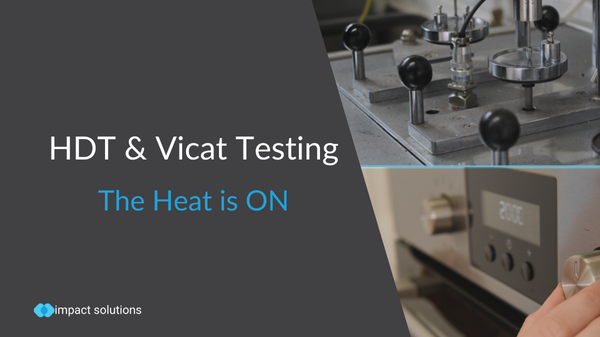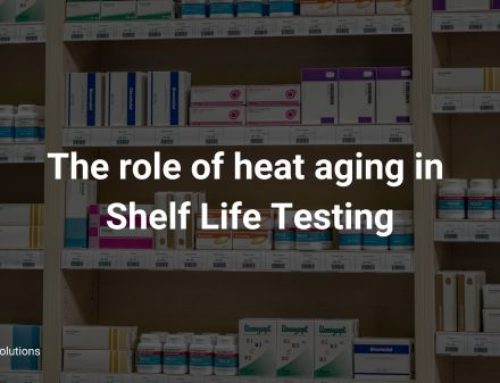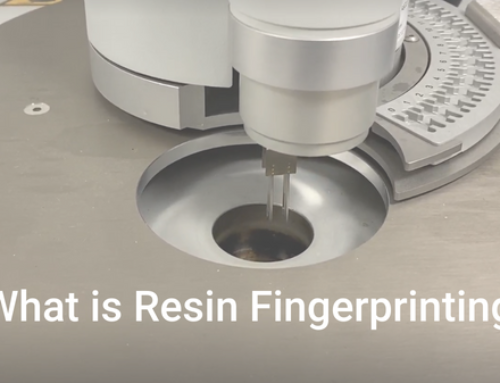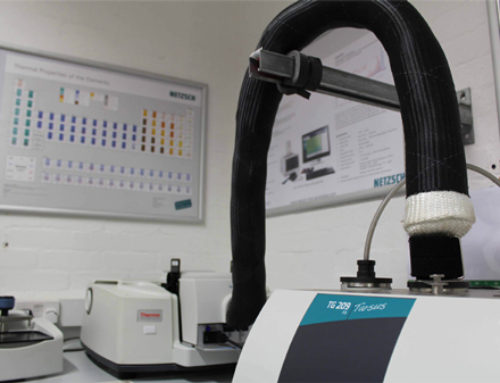Understanding HDT and Vicat Testing: Importance in the Industry
In the world of materials science and engineering, understanding the thermal properties of materials is crucial. Two essential tests used to evaluate the thermal performance of polymers and plastics are the Heat Deflection Temperature (HDT) test and the Vicat Softening Temperature (Vicat) test. These tests provide valuable information about a material’s behaviour under heat and are widely used in the industry for quality control, material selection, and product design.
What is HDT Testing?
Heat Deflection Temperature (HDT), also known as the Heat Distortion Temperature, measures the temperature at which a polymer or plastic sample deforms under a specified load. The test helps determine the material’s ability to withstand elevated temperatures without losing its structural integrity.
During HDT testing, a sample bar of the material is placed under a constant load and gradually heated at a specific rate. The temperature at which the material deflects a certain amount (usually 0.25 mm) is recorded as the HDT. This test is conducted according to standards like ISO 75 or ASTM D648.
What is Vicat Testing?
The Vicat Softening Temperature (VST) test measures the temperature at which a plastic or polymer sample begins to soften under a specified load. Unlike HDT, which measures the temperature at which a material deforms, the Vicat test focuses on the point at which the material transitions from a rigid state to a more plastic, deformable state.
In the Vicat test, a flat-ended needle is pressed into the material under a specified load as the temperature is gradually increased. The temperature at which the needle penetrates a specific depth (usually 1 mm) is recorded as the Vicat Softening Temperature. This test is typically conducted according to standards such or ISO 306, or more specific standards such as ISO 2507 or ENAT 12-24.
Importance of HDT & Vicat Testing in Industry
Both HDT and Vicat tests are vital in evaluating the thermal performance of materials, particularly in industries where polymers and plastics are used. Here’s why these tests are so important:
1. Material Selection: Engineers and designers rely on HDT and Vicat test results to choose the appropriate materials for applications that involve exposure to high temperatures. For example, in automotive and electronics industries, components made from plastics must withstand elevated temperatures without deforming or softening.
Material selection is essential when examining standards such as ENA-TS 12-24, which details the technical specifications for plastic ducts for buried electric cables. With an ever increasing effort to prolong buried cabling to reduce maintenance costs and disruption to infrastructure, Vicat softening temperature is an essential material property, protecting electronic industries and thus promoting safety for workers.
2. Quality Control: HDT and Vicat tests are essential for maintaining consistent product quality. By ensuring that materials meet the required thermal performance standards, manufacturers can avoid issues such as warping, deformation, or failure of products in the field.
3. Product Development: During the development of new materials or products, HDT and Vicat testing provide valuable data that guide the design process. Understanding how a material behaves under heat allows engineers to optimize products for performance, durability, and safety.
4. Regulatory Compliance: Many industries are subject to strict regulatory standards that specify the thermal properties materials must meet. HDT and Vicat testing are often required to demonstrate compliance with these regulations, ensuring that products are safe for use in their intended applications.
ISO 5207 is a excellent example of regulatory compliance, stipulating pass criteria specific to common household and industrial thermoplastic pipes and fittings such as PVC & ABS. By meeting this criteria, industries can safely select appropriate materials and implement systems knowing that they meet the safety standards.
5. Performance Comparison: HDT and Vicat tests allow for the comparison of different materials’ thermal properties, enabling manufacturers to make informed decisions when selecting or developing new materials. This can be crucial in competitive markets where material performance is a key differentiator.
Solutions
In the industrial world, understanding the thermal properties of materials is critical to ensuring product performance, safety, and compliance. HDT and Vicat testing are indispensable tools that provide valuable insights into how materials will behave under heat. By measuring the heat deflection temperature and Vicat softening temperature, manufacturers can make informed decisions about material selection, quality control, and product design, ultimately leading to better, more reliable products.
Whether you’re developing new materials, designing high-performance products, or ensuring regulatory compliance, HDT and Vicat testing are fundamental components of the process, helping to ensure that materials meet the rigorous demands of their intended applications.
Impact Solutions can provide both HDT and Vicat testing. Please get in touch if you think we can help support you.




